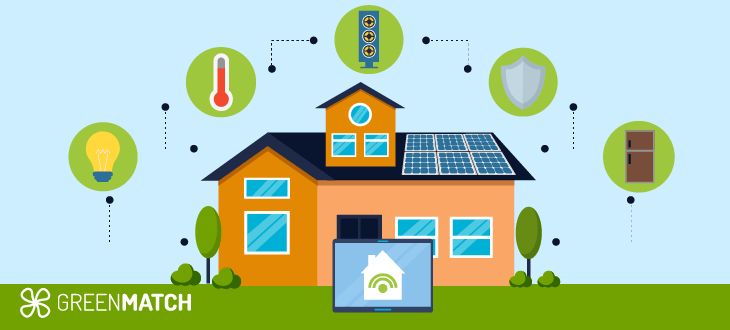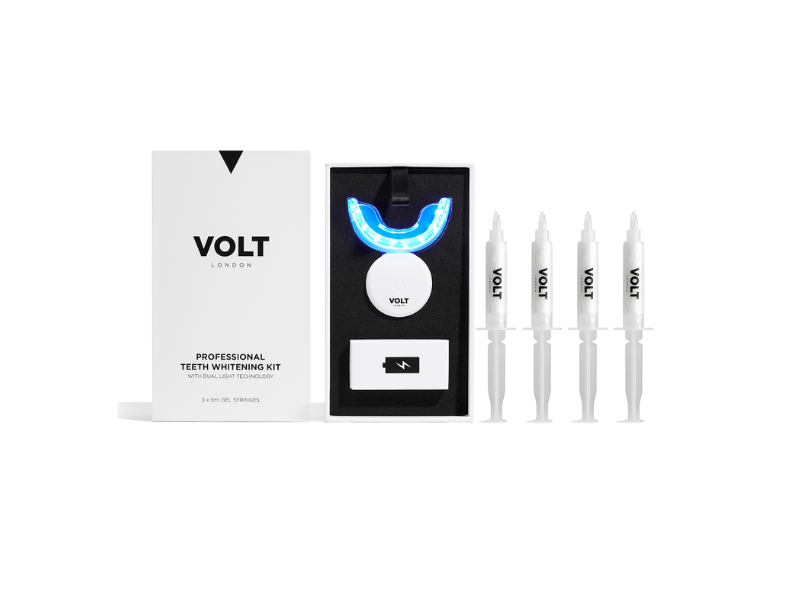Discover Pandipedia
Pandipedia is the world's first encyclopaedia of machine generated content approved by humans. You can contribute by simply searching and clicking/tapping on "Add To Pandipedia" in the answer you like. Learn More
Expand the world's knowledge as you search and help others. Go you!

To maintain indoor plants, it's essential to understand their specific needs regarding light, water, and humidity. Most houseplants thrive in bright, indirect light, so placing them near south or west-facing windows can maximize exposure. Regularly rotate your plants to ensure even light distribution and adjust their position during seasonal changes to account for varying sunlight levels[4][5].
Watering is crucial; check the top inch of soil for dryness before watering. Overwatering can lead to root rot. Use room temperature water and ensure pots have drainage[1][4]. Additionally, monitor humidity levels, as many plants prefer a humid environment; grouping them or using humidifiers can help[5]. Regularly clean leaves of dust to encourage photosynthesis[5].
Let's look at alternatives:
- Modify the query.
- Start a new thread.
- Remove sources (if manually added).
- Request a manual search from our human research team.

Moana 2 redefines heroine roles by presenting its protagonist as a powerful figure of strength, independence, and environmental stewardship. Unlike traditional Disney princesses, Moana clearly states she is not a princess, which highlights her departure from typical tropes of ballgowns and romance. Her adventures focus on active engagement with nature, showcasing her collaborative relationship with environmental forces rather than simply reacting to them, establishing a new narrative for female characters in animated films[1][2].
The sequel emphasizes Moana's maturity and leadership as she leads her community in restoring environmental harmony. This shift showcases female empowerment, since Moana serves as a guide and protector, symbolizing hope and agency for future generations. The film's celebration of Polynesian culture further enriches this new direction, allowing Moana to be a heroine who embodies purpose and interconnectedness with nature[3][5].
Let's look at alternatives:
- Modify the query.
- Start a new thread.
- Remove sources (if manually added).
- Request a manual search from our human research team.
Get more accurate answers with Super Search, upload files, personalised discovery feed, save searches and contribute to the PandiPedia.

The adoption of smart home devices is reshaping how households manage energy consumption, leading to significant savings and enhanced efficiency. These devices utilize advanced technology to optimize energy use, which can help reduce electricity bills and minimize environmental impact.
Smart Devices and Energy Efficiency

Smart home technologies, such as smart thermostats, lighting systems, and energy-efficient appliances, are designed to improve energy consumption by making homes more responsive to the needs of residents. For instance, smart thermostats can learn from user behavior, automatically adjusting heating and cooling settings according to occupancy patterns and preferences. This feature allows homeowners to save energy without sacrificing comfort, as the system can prevent heating or cooling an empty house. According to reports, the installation of smart thermostats can lead to savings of up to £311 off energy bills annually[7].
In addition to thermostats, smart lighting offers another layer of control and efficiency. These systems can adjust automatically based on the time of day or occupancy—turning off lights in unoccupied rooms or dimming them according to natural light levels. This adaptability not only contributes to lower energy usage but also enhances the overall convenience of home environments[7][8].
Peak Demand Management

Smart home technology also plays a pivotal role in managing energy consumption during peak demand hours. Devices like SmartCharge, developed in research initiatives, intelligently switch between battery power and grid electricity based on real-time energy costs. By managing when energy is drawn from the grid, these systems help reduce strain on electric grids during rush hours, which typically necessitate more expensive energy production methods. In turn, this could lead to reduced costs for both consumers and utility providers[2].
The integration of smart meters facilitates this process further by providing real-time data on energy usage, allowing users to monitor and adjust their consumption patterns to take advantage of lower rates during off-peak periods[8]. This information is instrumental for consumers looking to optimize their energy expenditure, as it encourages shifts in usage to times when electricity is cheaper.
Cutting-Edge Technologies for Savings

The advancements in smart home technologies contribute not only to energy savings but also to a reduction in carbon footprints. Devices such as smart appliances, which are increasingly available in the market, boast energy efficiency ratings that significantly outpace traditional models. For example, energy-efficient refrigerators and washing machines designed with smart capabilities can adapt their operations based on user patterns and external conditions, optimizing energy use throughout their cycles[5][8].
Furthermore, smart home systems can integrate with renewable energy sources, leveraging solar panels and home batteries to maximize the use of green energy. This capability is crucial in enhancing the overall sustainability of a household, allowing for a more significant reduction in reliance on fossil fuels[3][8].
Future Trends in Smart Home Energy Management
As the market for smart home devices continues to grow, more residents are expected to embrace energy-saving technologies. By the end of 2024, projections indicate substantial increases in smart home adoption, with over 20% of UK households utilizing such technologies to optimize their energy usage[3][8]. This trend is set to rise even further, with forecasts suggesting that by 2027, nearly half of all homes will integrate smart technology for energy management[3][7].
The implementation of standardized protocols, such as Matter, aims to facilitate the compatibility of various smart devices across different ecosystems, making it easier for consumers to build comprehensive smart home solutions that enhance energy efficiency. As interoperability improves, users will benefit from seamless automation and better energy management across all their devices, creating a more integrated and efficient home environment[4][6].
The Role of AI and Automation
Artificial intelligence (AI) is another critical factor driving the evolution of smart home technology. AI-enabled devices can learn from household dynamics, adjusting settings proactively to ensure energy savings. For instance, a smart thermostat equipped with AI can make real-time adjustments based on weather patterns and user habits without requiring constant inputs from homeowners. This level of automation not only simplifies usage but ensures maximum efficiency and potential savings on energy bills[4][7][8].
Conclusion
In summary, smart home devices are revolutionizing energy management within households. By offering advanced functionalities that promote efficiency, automation, and integration with renewable energy sources, these devices not only help reduce costs but also promote sustainable living practices. As technology continues to advance and consumer adoption increases, the future of smart homes promises even greater possibilities for energy savings and environmental benefits. The integration of smart technologies is more than just a convenience; it is a vital step toward achieving a more sustainable and efficient way of living.
Let's look at alternatives:
- Modify the query.
- Start a new thread.
- Remove sources (if manually added).
- Request a manual search from our human research team.

Crest 3D Whitestrips
A popular choice among consumers for their efficacy. These strips can whiten teeth several shades after consistent use. They are designed to stay in place without sliding around[5].

Lumineux Teeth Whitening Strips
A peroxide-free option that uses essential oils and other natural ingredients to achieve mild whitening effects. Ideal for those concerned with enamel sensitivity[1].
:max_bytes(150000):strip_icc()/auraglow-deluxe-teeth-whitening-kit-ba087996f22547cfa8210ca29e3a8a4c.jpg)
Auraglow Whitening Kit
This kit employs a handheld LED device that claims to whiten teeth up to 10 shades in just one week, providing effective results despite the large size of the tray[1].
:max_bytes(150000):strip_icc()/the-bright-pen-2-pack-80de3457c1b742f5b3fa13852e716171.jpg)
Lumineux Bright Pen
Offers an easy application with no sensitivity issues, as it uses a blend of essential oils instead of hydrogen peroxide. Results can be achieved over a couple of weeks with consistent use[1].

Colgate Max White Ultimate LED Kit
Includes an LED mouthpiece accompanied by a whitening gel that utilizes hydrogen peroxide, promising noticeable results[6].

MySweetSmile Teeth Whitening Powder
This dentist-approved powder claims to help remove stains without peroxide and is designed for use a couple of times per week[8].

Volt Teeth Whitening Kit
Composed of an LED device and PAP whitening gel, this kit focuses on enamel care while effectively whitening teeth[8].

Hismile Teeth Whitening Kit
A kit that includes non-peroxide strips praised for their gentle approach. It consistently receives positive reviews for consistent results without irritation[8].
LED Teeth Whitening Kit by CurrentBody
This kit uses PAP technology to not only whiten teeth but also improve gum health through the use of clinically proven light wavelengths[8].

Billion Dollar Smile Teeth Whitening Strips
These mint-flavored strips work to dissolve stains without sensitivity. They are easy to apply and showed visible improvements after just one use[8].

HeySmile Teeth Whitening Kit
Designed to deliver results in just six days with an LED light to enhance the whitening process, making it a convenient choice for busy lifestyles[8].
Good Housekeeping Whitestrips
Known for their rapid results and effectiveness in removing tough stains from coffee and wine. These strips provide a strong non-slip grip and are easily used during daily activities[5].

Polished London Teeth Whitening Pen
A portable option perfect for quick touch-ups. The pen’s peroxide-free formula works to dissolve stains without causing sensitivity[8].

Snow Teeth Whitening Kit
Features a wireless mouthpiece to ensure a comfortable fit. This kit is recognized for its effectiveness and ease of use, making it ideal for at-home whitening[6].

Glo32 Teeth Whitening Strips
These strips use coconut oil and are designed for a 14-day treatment; they offer results without significant discomfort[8].
Rembrandt Whitening Strips
These strips are well-regarded for their effectiveness and user-friendly design, providing results without excessive sensitivity[6].
:max_bytes(150000):strip_icc()/Cali-White-Teeth-Whitening-Kit-with-LED-Light-d75ed7fab6d34369bb284f9855888e17.jpg)
Cali White Teeth Whitening Kit
Offers a quick, user-friendly process, and is noted for being budget-friendly while still providing effective whitening[1].
:max_bytes(150000):strip_icc()/71fpBFzVBSL._AC_SL1399_-8be9e7db7f084e288fc489ba79db6b41.jpg)
iSmile LED Teeth Whitening Kit
A gel that can be conveniently applied with a built-in tray, ensuring less mess and enhanced effectiveness against stains[8].
Hismile PAP+ Whitening Toothpaste
While primarily a toothpaste, this product works in conjunction with other whitening treatments for an enhanced overall whitening effect[10].

Colgate Optic White Pro Series Toothpaste
Contains a high concentration of hydrogen peroxide that claims to remove deep stains over time without causing irritation[10].
Spotlight Oral Care Teeth Whitening Kit
A comprehensive system including strips and toothpaste, delivering effective whitening while being easy on sensitive teeth[8].
Volt Whitening Kit
Pairing an LED device with a dental-grade whitening gel, this kit effectively targets stains while focusing on enamel care[8].
Glo Whitening System
Combines traditional whitening methods with innovative technology to provide professional-level results at home[10].
Moon Teeth Whitening Pen
This convenient pen is ideal for those on-the-go and promises to brighten your smile quickly thanks to its comfortable application process[10].
Let's look at alternatives:
- Modify the query.
- Start a new thread.
- Remove sources (if manually added).
- Request a manual search from our human research team.

Shoshin (Japanese: 初心) is a concept in Zen Buddhism meaning 'beginner's mind.' It refers to having an attitude of openness, eagerness, and lack of preconceptions when studying, similar to how a beginner approaches learning, even at an advanced level. The word is a combination of 'sho' (初), meaning 'beginner' or 'initial,' and 'shin' (心), meaning 'mind'[1]. Shoshin encourages practitioners to counter the hubris and closed-mindedness associated with thinking of oneself as an expert, thus fostering a mindset that remains receptive to new ideas and approaches[1].
Let's look at alternatives:
- Modify the query.
- Start a new thread.
- Remove sources (if manually added).
- Request a manual search from our human research team.
Deep neural networks have revolutionized many fields, particularly image recognition. One significant advancement in this domain is the introduction of Residual Networks (ResNets), which address challenges related to training deep architectures. This blog post breaks down the concepts from the research paper 'Deep Residual Learning for Image Recognition,' detailing the main ideas, findings, and implications for future work in the field.
The Challenge of Deep Neural Networks
As neural networks grow in depth, they become increasingly difficult to train due to several issues, including the degradation problem. This phenomenon occurs when adding more layers results in higher training error, counterintuitively leading to worse performance on benchmarks. The authors hypothesize that instead of learning to approximate the desired underlying function directly, it's easier to learn a residual mapping, which represents the difference between the desired output and the initial input[1].
To address this, the authors propose a deep residual learning framework. Instead of hoping that a few stacked layers can model a complex function directly, ResNets reformulate the layers to learn residual functions relative to the layer inputs, thereby promoting easier optimization and improved accuracy with increased network depth.
The Structure of Residual Networks
Residual Networks incorporate shortcut connections that bypass one or more layers. This allows the network to learn residual functions, effectively simplifying the learning task. The formulation includes an identity mapping, making it easier for the optimization algorithms to incorporate the original input, thereby accelerating convergence[1].
The backbone of a ResNet includes components like convolutional layers and batch normalization (BN), which work together to stabilize and accelerate training. The authors demonstrate that their ResNet architecture achieves a notable reduction in error rates on standard datasets, achieving significant competitive results compared to existing methods.
Key Findings and Experiments

In their experiments, the authors evaluated ResNets across multiple benchmarks, including ImageNet, CIFAR-10, and COCO detection tasks. They found that deeper networks (up to 152 layers) consistently outperform shallower networks like VGG, which uses up to 19 layers. For instance, a ResNet with 152 layers achieved a top-5 error rate of 3.57%, compared to 7.3% for the VGG-16 model[1].
Moreover, the paper presents compelling evidence that residual learning allows for deeper architectures without suffering from the degradation problem exhibited by plain networks. This is illustrated through training procedures that highlight the lower training errors and improved validation performance for deeper ResNets[1].
Architectural Innovations
![Table 6. Classification error on the CIFAR-10 test set. All methods are with data augmentation. For ResNet-110, we run it 5 times and show “best (mean±std)” as in [43]. Table 6. Classification error on the CIFAR-10 test set. All methods are with data augmentation. For ResNet-110, we run it 5 times and show “best (mean±std)” as in [43].](https://askpandipro.s3.amazonaws.com/users/48/documents/142/tables/4.png?AWSAccessKeyId=AKIAQT4QH3CHNPX5WHX7&Signature=gcRBVj0fwfZ0rraAafXRGkkP9B4%3D&Expires=1751338846)
The design of ResNets is grounded in practical considerations. For instance, the authors employed a bottleneck architecture in very deep ResNets. This involves using short, narrow layers (commonly 1x1 convolutions) to reduce dimensionality before the main processing occurs, thereby maintaining complexity while allowing for deeper networks. They tested various configurations, confirming that the addition of these bottleneck layers does not significantly increase the number of parameters, but yields much better performance[1].
Implications for Future Research
The insights gained from deep residual learning have profound implications for future research in neural network architecture and optimization. One of the significant takeaways from the study is that while deeper networks can achieve remarkable accuracy, they also necessitate careful design to mitigate issues related to overfitting and saturation of activations.
The authors also highlight the iterative nature of developing effective network architectures, noting that future developments might involve exploring multi-scale training strategies or advanced techniques for optimizing residual connections and layer compositions.
Conclusion
Deep residual learning introduces a transformative approach to training deep neural networks, particularly for image recognition tasks. By reformulating how layers interact and utilizing residual functions, researchers and practitioners can develop more powerful models that maintain high accuracy even as complexity increases. The advancements presented in this paper set a robust foundation for continuing innovations within the realm of neural networks, promising significant enhancements in various applications beyond image recognition[1].
With these developments, the field is well-positioned to tackle even more complex challenges in visual recognition and other domains where deep learning frameworks can be applied.
Let's look at alternatives:
- Modify the query.
- Start a new thread.
- Remove sources (if manually added).
- Request a manual search from our human research team.
Get more accurate answers with Super Search, upload files, personalised discovery feed, save searches and contribute to the PandiPedia.
Manmachine Solutions offers professional housekeeping services tailored to your needs. They provide expert cleaning and maintenance solutions for both homes and offices, ensuring a spotless environment. Their focus on facility management showcases their commitment to quality, and they serve multiple niches including industrial, commercial, and corporate sectors[1].
The company's structured approach and dedicated audit team ensure the best service and customer satisfaction. Their integrated facility management programs include corrective and predictive maintenance, guaranteeing that they meet your specific demands[1].
Let's look at alternatives:
- Modify the query.
- Start a new thread.
- Remove sources (if manually added).
- Request a manual search from our human research team.
Let's look at alternatives:
- Modify the query.
- Start a new thread.
- Remove sources (if manually added).
- Request a manual search from our human research team.

The surge in the use of transformer models has transformed the landscape of deep learning, serving as a foundation for a multitude of applications across language processing, vision, and reinforcement learning. However, as these models grow in capability, the resource demands for training and usage increase significantly, especially for tasks requiring extensive context. A novel approach to address these challenges is encapsulated in the concept of Neural Attention Memory Models (NAMMs), introduced by Edoardo Cetin and colleagues.
Understanding the Problem
Current methodologies for handling the escalating resource demands of foundation models often involve rudimentary techniques that selectively drop elements from input contexts based on predefined rules. Such hand-crafted strategies aim to maintain model performance while reducing memory usage. However, these methods frequently compromise efficiency for performance, leading to dissatisfaction among practitioners looking for both high effectiveness and resource economy[1].
Introducing Neural Attention Memory Models (NAMMs)

The NAMMs framework rethinks how memory management is approached within transformer architectures. By moving beyond fixed, rule-based strategies, NAMMs leverage a learned network that optimizes performance and efficiency without significant overhead. The core innovation of NAMMs lies in their ability to be evolved from pre-trained transformers to adaptively manage memory based on the unique requirements of different layers and attention heads[1].
Mechanism of Action

At its core, NAMMs utilize an evolutionary optimization process to selectively manage memory within the Key-Value (KV) cache of transformers. This is achieved by conditioning solely on the attention matrix values generated during the attention computation of the model. Through this approach, NAMMs can differentiate between relevant and irrelevant information dynamically, allowing each layer of the model to focus on the most pertinent tokens, thus enhancing efficiency and preserving performance[1].
Key Findings
Performance Improvements

Through rigorous experimentation across various long-context benchmarks, the authors demonstrate substantial gains in both performance and efficiency when employing NAMMs. For instance, on the LongBench protocol, NAMMs achieved a striking normalized performance of 29.33 with a significant reduction in cache size[1]. This represents not just marginal improvements but a new standard for achieving effective memory management in transformers.
Moreover, NAMMs have shown remarkable versatility, maintaining effectiveness when applied to different transformer architectures and task modalities, including vision and reinforcement learning settings. This flexibility implies that models trained with NAMMs can perform efficiently even when tasked with completely new challenges and architectures without needing extensive retraining or adjustment of parameters.
Generalizability
One of the standout features of NAMMs is their ability to generalize through zero-shot transfer. Models trained only on language tasks successfully adapted to other domains, such as vision, demonstrating the robust applicability of this framework[1]. This property is particularly valuable in real-world applications where models may encounter unfamiliar data types or tasks without prior exposure.
Empirical Validation

The experimental validation included comparisons with traditional methods such as H2O and L2, where NAMMs consistently outperformed these existing techniques. For example, across multiple language modeling tasks, traditional methods often resulted in performance degradation due to their memory-saving heuristics. In contrast, NAMMs effectively maximized information retention, showcasing both improved performance and reduced resource consumption[1].
Future Directions

While the initial results illustrate the promise of the NAMMs framework, the authors note considerable room for further exploration. Suggestions for future work include refining the feature extraction process used in the training of NAMMs for even finer control over memory efficiency and exploring higher EMA (Exponential Moving Average) coefficients to better retain crucial information from recent tokens.
Additionally, the potential integration of NAMMs with gradient-based optimization in a hybrid model could yield significant advances in memory management strategies, balancing efficiency and performance across a broader array of tasks[1].
Conclusion

Neural Attention Memory Models represent a significant step forward in optimizing transformer architectures for greater efficiency without compromising performance. By fundamentally rethinking memory management in transformers and leveraging evolutionary algorithms, NAMMs equip these models to better handle long contexts and diverse data types. As the demand for scalable and effective AI solutions grows, approaches like NAMMs will be crucial in shaping the next generation of intelligent systems.
In summary, NAMMs provide a powerful, flexible, and efficient way to enhance the capabilities of transformer models, promising a brighter future for applications in various domains, from natural language processing to complex multi-modal tasks.
Let's look at alternatives:
- Modify the query.
- Start a new thread.
- Remove sources (if manually added).
- Request a manual search from our human research team.
Let's look at alternatives:
- Modify the query.
- Start a new thread.
- Remove sources (if manually added).
- Request a manual search from our human research team.
















